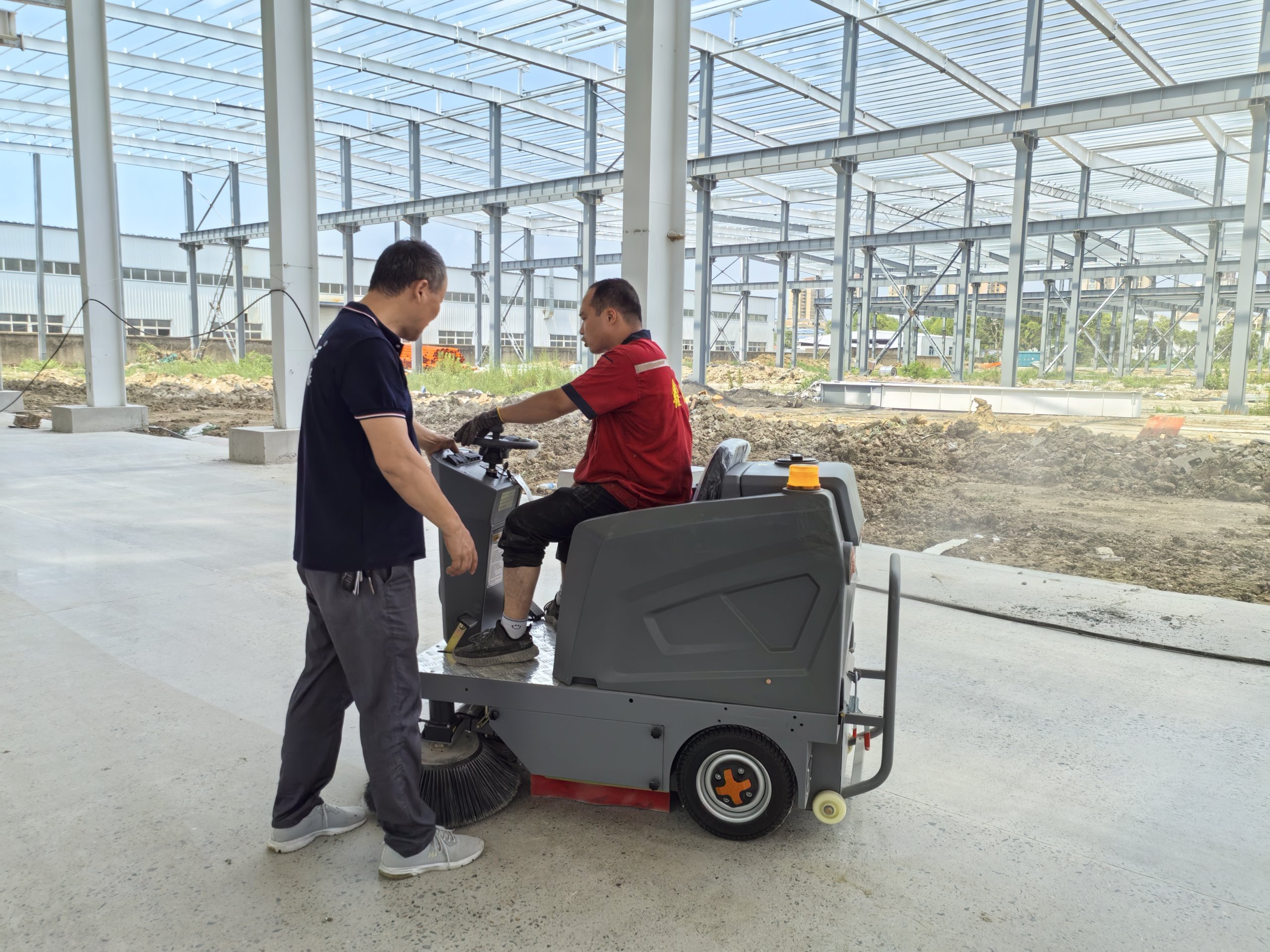Training for sweeper machine operation involves understanding the machine’s functions, safety protocols, maintenance, and efficient operation. Below is a structured training guide for sweeper machine operators:

1. Introduction to Sweeper Machines
- Types of sweeper machines:
- Mechanical Broom Sweepers (uses rotating brushes)
- Vacuum Sweepers (suction-based)
- Regenerative Air Sweepers (high-pressure air cleaning)
- Compact/Small Sweepers (for narrow spaces)
- Common applications (roads, warehouses, industrial sites, parking lots).
2. Pre-Operation Inspection
- Check engine oil, hydraulic fluid, and coolant levels.
- Inspect pincéis, hoses, and suction systems for wear and tear.
- Ensure tires, lights, and warning signals are functional.
- Verify dust collection system (if applicable).
3. Safety Training
- Personal Protective Equipment (PPE): Gloves, safety shoes, high-visibility vests, ear protection.
- Hazard Awareness:
- Avoid loose clothing near moving parts.
- Be cautious of pedestrians and traffic.
- Never operate near open flames (risk of dust explosion in some environments).
- Emergency Procedures: Shutdown process, fire extinguisher use.
4. Operating Procedures
- Starting the Machine: Proper ignition sequence.
- Adjusting Brush Pressure & Height: Based on surface type.
- Speed Control: Optimal sweeping speed for efficiency.
- Maneuvering Techniques: Turning, reversing, obstacle avoidance.
- Dumping Debris: Safe disposal of collected waste.
5. Maintenance & Troubleshooting
- Daily Maintenance:
- Clean brushes and debris hopper.
- Check for leaks or blockages.
- Weekly/Monthly Checks:
- Lubricate moving parts.
- Inspect belts and filters.
- Common Issues & Fixes:
- Loss of suction → Check hoses and filters.
- Brush wear → Adjust or replace brushes.
- Engine problems → Refer to service manual.
6. Best Practices for Efficient Sweeping
- Overlap sweeping paths to avoid missed spots.
- Adjust settings for different debris (leaves, sand, gravel).
- Plan routes to minimize fuel consumption and time.
 Tanjie Limpo
Tanjie Limpo


